Illinois is a large state with a few major cities, regional hubs, and a lot of people. Today, we are going to take a look at the 10 fastest-growing counties in Illinois and learn about their population, industry, and maybe why the area is growing so fast. Let’s get started.
General Population Stats for Illinois
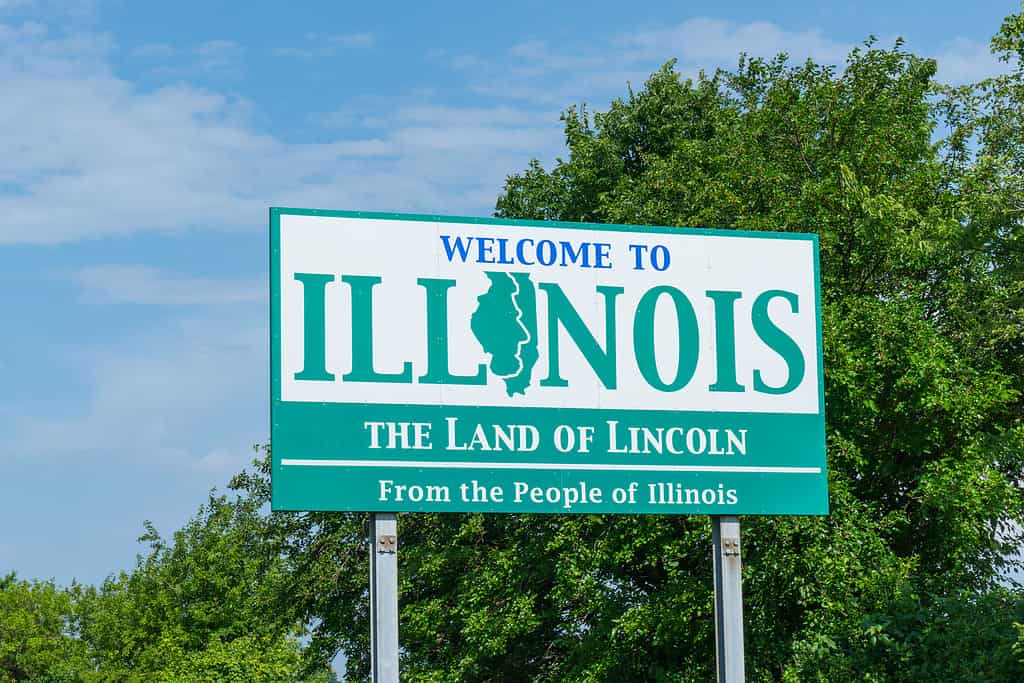
Illinois had a stable population over the past decade, but the counties within it continue to shift.
©iStock.com/pabradyphoto
Illinois as a whole has been somewhat stable to slightly declining in population over the past decade. In 2010, the state’s population appears by the Census Bureau as 12,839,632. However, in 2022 the population estimate went to 12,582,032, a decrease of around 300,000 people. This change seems somewhat notable until we look at the data from 2020. In 2020, the population of Illinois was 12,812,545, a much closer number to the 2010 figure, showing us that the changes are likely from the Covid and post-Covid era.
Covid had (and still has) a strange impact on population movements across the country, with many people leaving metro areas during the pandemic. Now, a few years post-Covid, those metro areas are somewhat on the rebound, a data point which will likely take a few years and another census to confirm.
Let’s take a more granular look at the state at the county level and see the fastest-growing counties in Illinois.
The 10 Fastest Growing Counties in Illinois

Population growth for our list is measured by percentage growth, not individuals.
©iStock.com/mkgphotography.co
For an overall more accurate look at how these trends track, the following data will be guided by the population growth percentages from 2010-2023. If the data was gathered by the raw number of people per county added, the relative scale of things would be distorted heavily by the metro areas within the state, specifically the city of Chicago. That being said, let’s get started.
1. Kendall County

A suburb of Chicago, Kendall County has natural areas like this one, Fox Lake.
©Brian Kapp/Shutterstock.com
Kendall County is currently ranked as the fastest-growing county in the state of Illinois. From 2010 to 2023, Kendall grew by 19.41% and currently has a total population of 137,000 people. Kendall has a land area of 322 sq miles, resulting in a population density of 425 people per sq mile. It is the 15th largest county in Illinois and grew by 1.27% over the past year.
Kendall is located in the northeastern portion of the state and is considered part of the Chicago metropolitan area. From 2000-2010, the county was the fastest-growing county in the entire United States. Although it continues to grow, its relative growth has slowed a bit as the population increases. The largest industries in the region are Retail trades, Health Care and Social Assitance, and Educational Services.
2. Monroe County
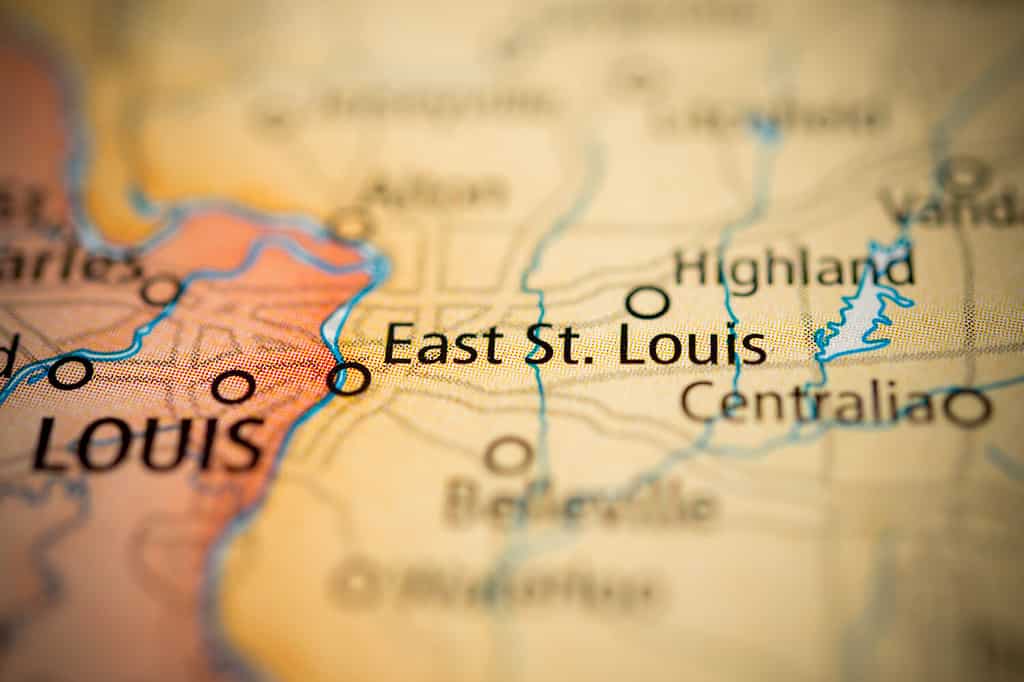
Although Monroe County is located in Illinois, it is a part of the St. Louis metro area, located just to the south of East St. Louis in a more rural area.
©Tudoran Andrei/Shutterstock.com
Monroe County is the second fastest-growing county in Illinois. From 2010 to 2023, Monroe grew by 7.9% and currently has a population of 35,562 people. Monroe has a land area of 398 sq miles, resulting in a population density of 89 people per sq mile.
Monroe is located in the southwestern portion of the state (a region known as “Little Egypt”). It’s considered part of the St. Louis, Missouri, metro area, despite being within an adjacent state. Some of the major cities within Monroe include Waterloo, Balmeyer, and Fults. Major industries in Monroe include industrial manufacturing, education, pharmaceuticals, and health services.
3. Johnson County
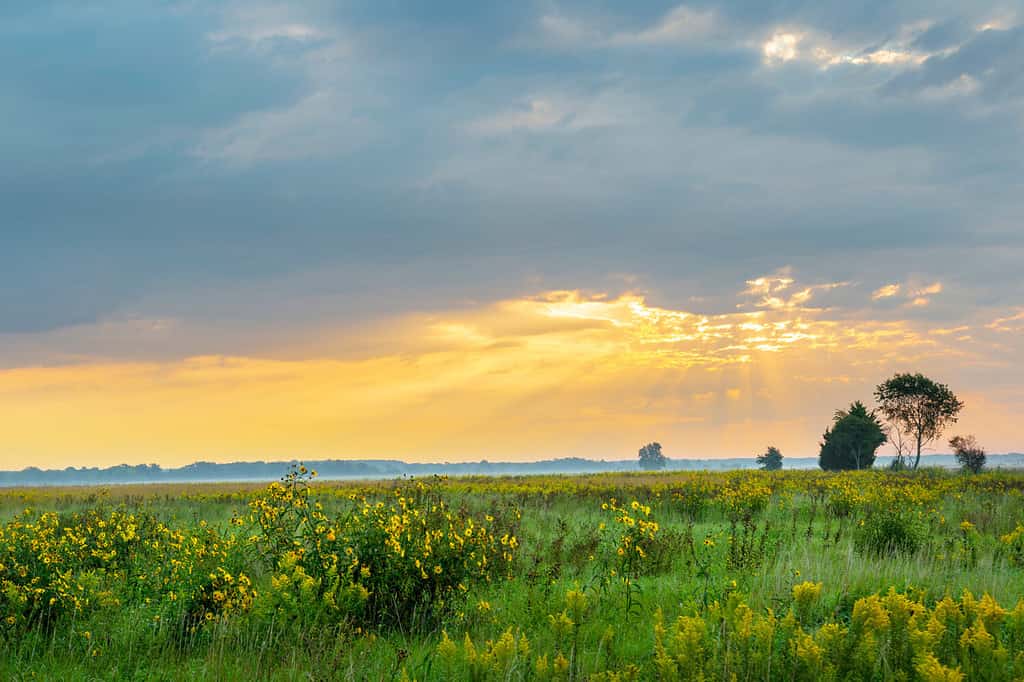
Marion is a city within Johnson County and has large open prairies like this one.
©Danita Delimont/Shutterstock.com
Johnson County is the third-fastest growing county in Illinois. From 2010 to 2023, Johnson grew by 7.51% and currently has a total population of 13,527 people. Johnson has a land area of 349 sq miles, resulting in a population density of 39 people per sq mile. In the past year, however, Johnson has only seen an increase in the population of .54%. It’s currently the 77th largest county in the state.
Johnson is located in the southernmost region of Illinois. Notable cities in the area include Vienna, Gorville, Buncombe, and Cypress. The county’s name comes from Richard Mentor Johnson, the ninth Vice President of the United States. The largest industries in the region are healthcare, public administration, and retail trade.
4. Grundy County
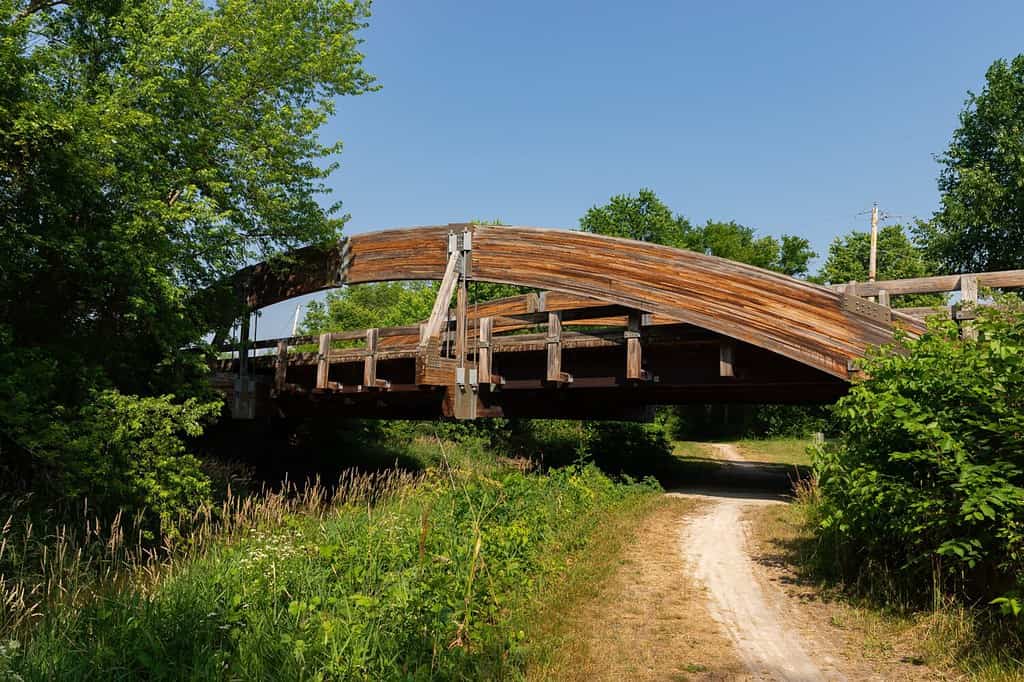
Morris, Illinois, is a city within Grundy County and a nearby suburb of Chicago. Grundy is close enough to be considered a part of the Chicago metro area.
©Eddie J. Rodriquez/Shutterstock.com
Grundy County is the fourth-fastest growing county in Illinois. From 2010 to 2023, Grundy grew by 6.41% and currently has a total population of 53,274 people. Grundy has a land area of 430 sq miles, giving it a population density of 120 people per sq mile.
Grundy is located in the northeastern portion of the state and is considered part of the Chicago-Naperville-Elgin metro area. Some of the notable cities within it are Morris (the county seat), Coal City, Mazon, Braceville, and Gardner. The largest industries within the region are trade, transportation, utilities, professional and business services, manufacturing, and financial services.
5. Will County
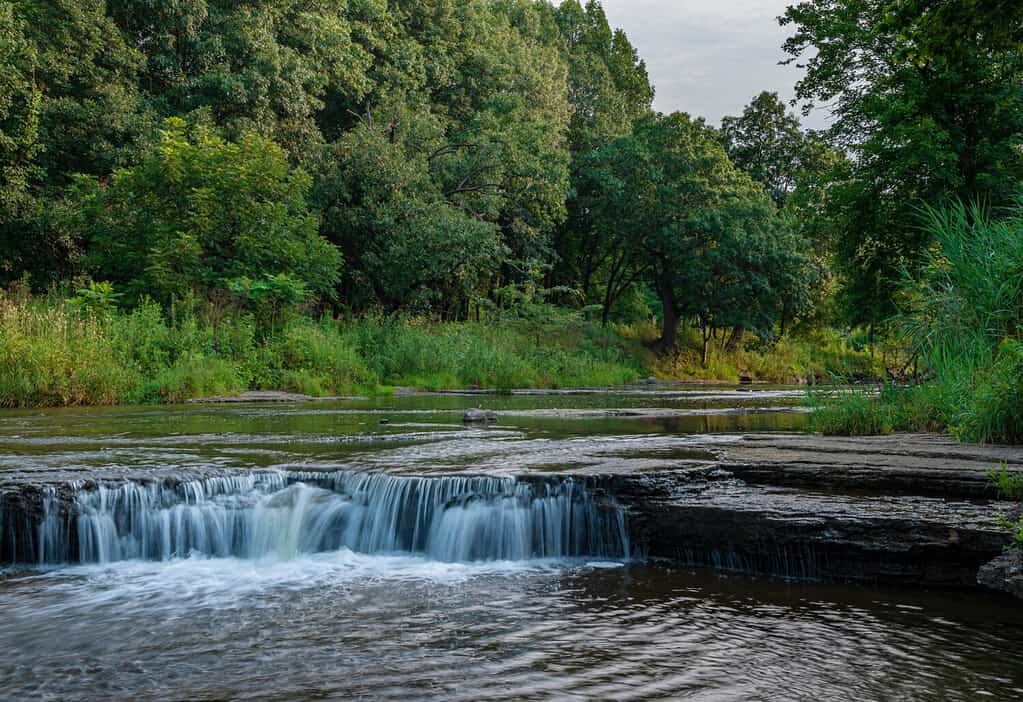
Although with a more urban northern border that turns rural and suburban towards the south, Will County is another collar county of Chicago.
©Hank Erdmann/Shutterstock.com
Will County is the fifth fastest-growing county in Illinois. From 2010 to 2023, Will grew by 3.61% and currently has a population of 701,995%, and is the fourth most populated county in the state. Will has a land area of 849 sq miles, giving it a population density of 820 people per sq mile.
Will is located in the northeastern portion of the state and is considered one of the five “collar counties” of the Chicago metro area. Larger cities in Will include Joliet, New Lenox, Lockport, and Romeoville. The major industries in Will include transportation and warehousing, retail trades, and health care and social assistance.
6. Champaign County

The University of Illinois is located within Champaign County at its main campus, Urbana-Champaign.
©B Craig/Shutterstock.com
Champaign County is the sixth fastest-growing county in Illinois. From 2010 to 2023, Champaign grew by 3.09% and currently has a population of 207,299, and is the tenth most populated county in the state. Champaign has a land area of 998 sq miles, giving it a population density of 208 people per sq mile.
Champaign is located in the east-central portion of the state and is home to the University of Illinois at Urbana-Champaign, the main campus of the University of Illinois school network. Larger cities in Champaign include Champaign, Urbana, Rantoul, and Mahomet. The major industries in Champaign include education, health care, research, and technology.
7. Carroll County
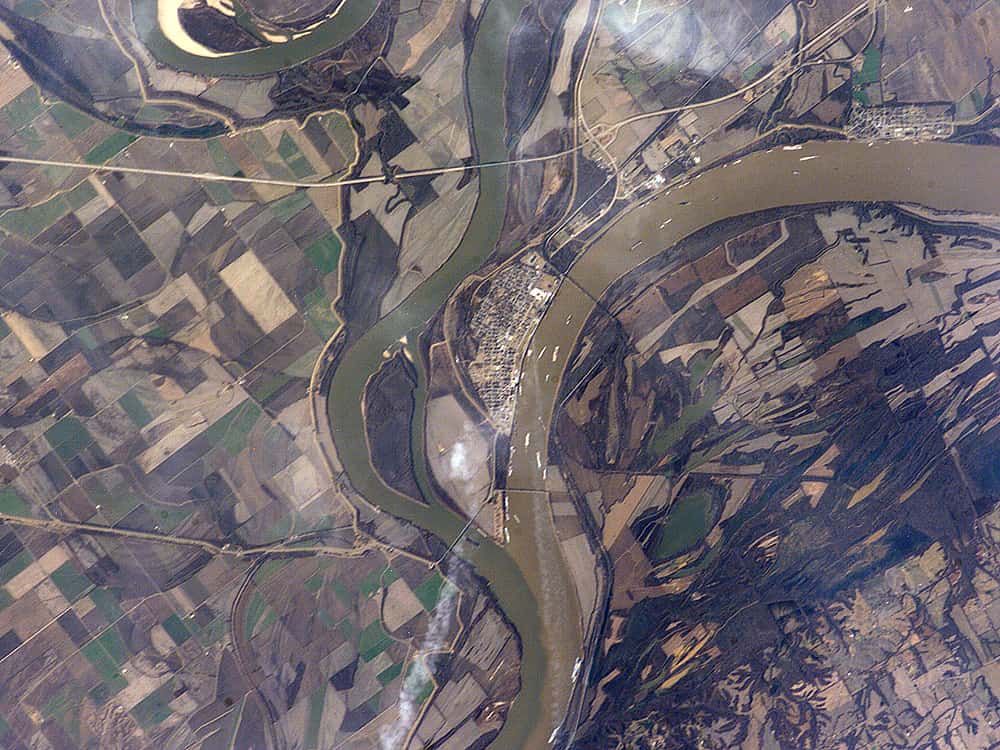
The Mississippi River borders Illinois to the west, with Carroll County located along that border.
©ISS Crew Earth Observations experiment and the Image Science & Analysis Group, Johnson Space Center, NASA / Public domain – Original / License
Carroll County is the seventh fastest-growing county in Illinois. From 2010 to 2023, Carroll grew by 2.67% and currently has a population of 15,798, and is the 67th most populated county in the state. Carroll has a land area of 445 sq miles, giving it a population density of 36 people per sq mile.
Carroll is located in the northwestern portion of the state, and the Mississippi River borders it to the west. Larger cities in Carroll include Mount Carroll, Savanna, Lanark, and Thomson. The major industries in Carroll mostly consist of manufacturing and agriculture.
8. DuPage County
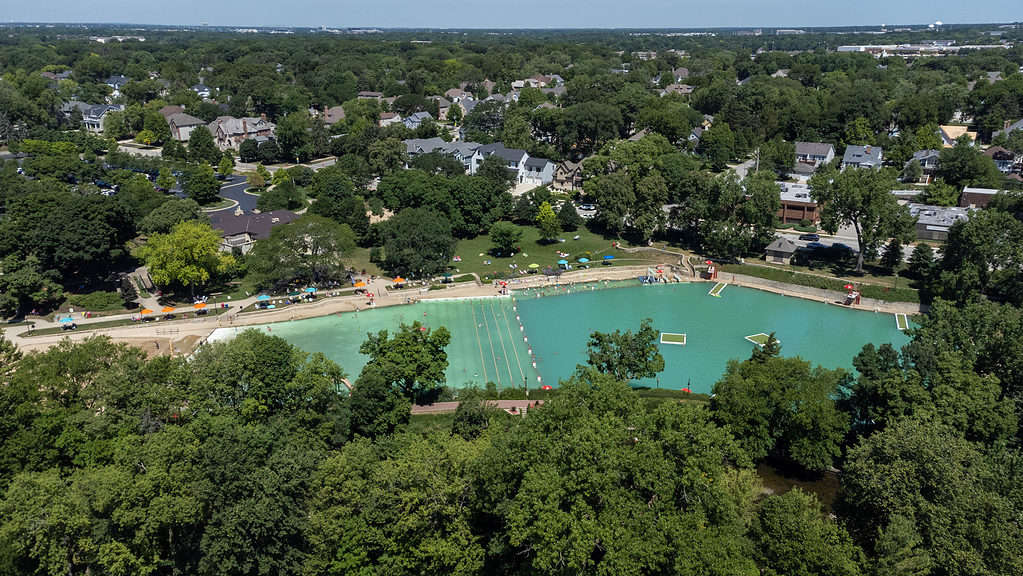
Centennial Beach has been a swimming area in Naperville, a city in Dupage County, for more than eight decades.
©3,826 × 2,152 pixels, file size: 1.3 MB, MIME type: image/jpeg – Original / License
DuPage County is the eighth fastest-growing county in Illinois. From 2010 to 2023, DuPage grew by 2.26% and currently has a population of 937,662, and is the second most populated county in the state. DuPage has a land area of 328 sq miles, giving it a population density of 2,860 people per sq mile.
DuPage is located in the northeastern portion of the state and is another one of the five “collar counties” of the greater Chicago metro area. Some of the notable cities in DuPage include Naperville, Wheaton, Downers Grove, Elmhurst, and Lombard. The major industries in DuPage include professional and business services, health care and social assistance, retail trade, and education.
9. Cook County
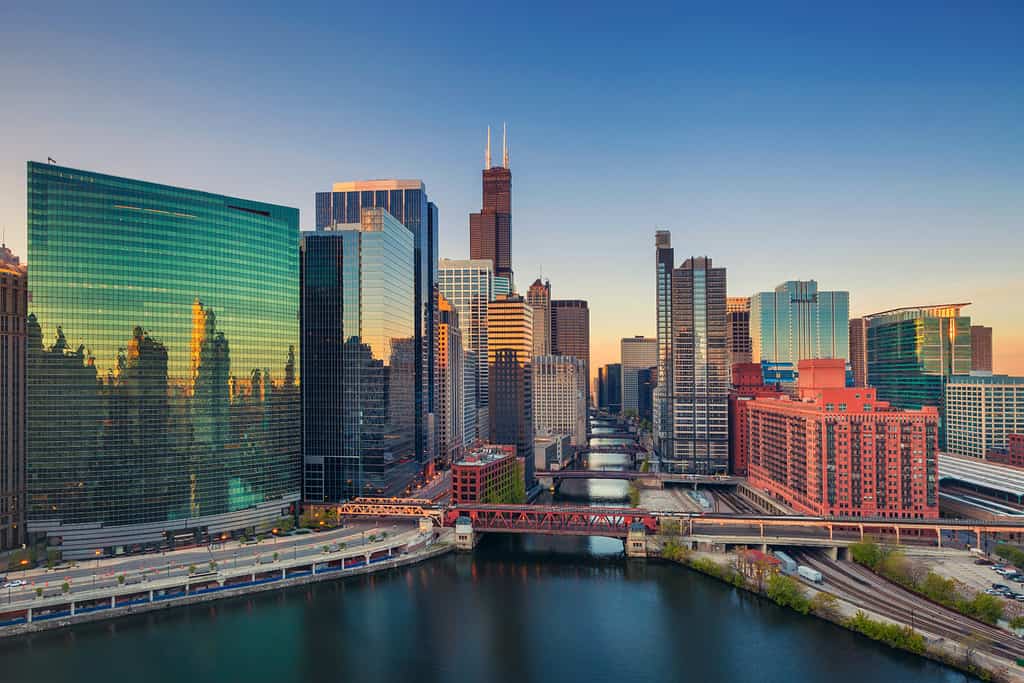
Illinois’ most populated county by a large margin, Cook County covers most of the greater Chicago area.
©Rudy Balasko/Shutterstock.com
Cook County is the ninth fastest-growing county in Illinois. From 2010 to 2023, Cook grew by 2.02% and currently has a population of 5,299,802, and is the largest county in the state by quite a large margin. Cook has a land area of 945 sq miles, giving it a population density of 5,610 people per sq mile.
Cook is located in the northeastern portion of the state and is the county that covers most of the Chicago metro area, hence the massive population. Larger cities in Cook include Chicago, Aurora, Elgin, Schaumburg, and Evanston. The major industries in Cook include trade, transportation and utilities, professional and business services, education and health services, and government.
10. Lake County
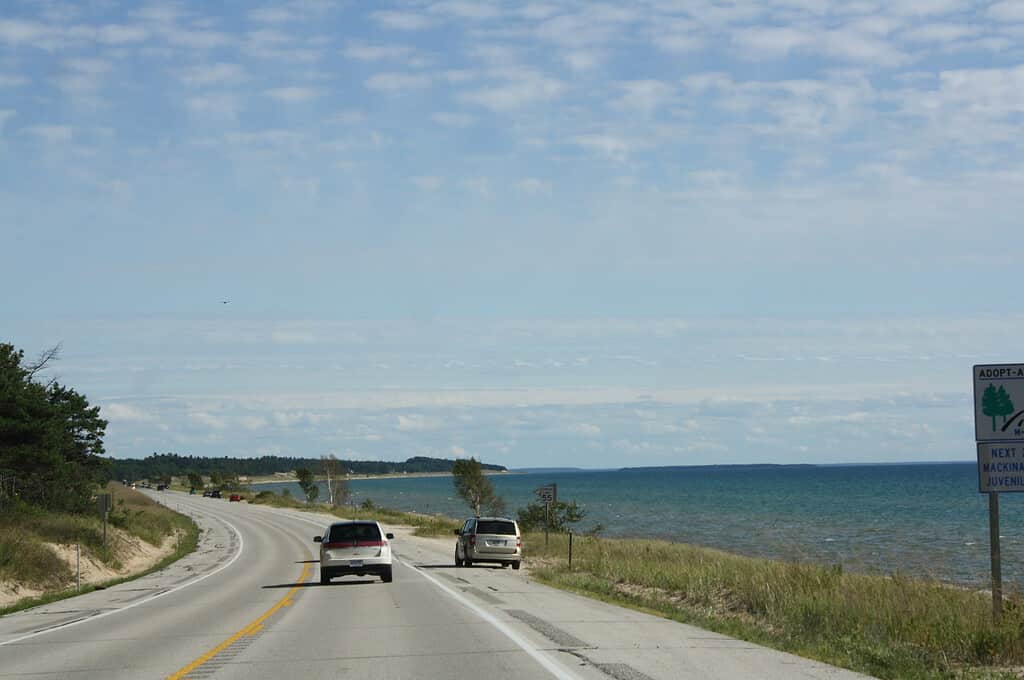
Another example of a Windy City’s “collar county,” Lake County, sits to the north of Chicago and on the shores of Lake Michigan.
©Royalbroil / CC BY-SA 3.0, via Wikimedia Commons – Original / License
Lake County is the tenth fastest-growing county in Illinois. From 2010 to 2023, Lake grew by 2.01% and currently has a population of 717,606, and is the third most populated county in the state. Lake has a land area of 444 sq miles, giving it a population density of 1,617 people per sq mile.
Lake is located in the northeastern portion of the state and is another one of the five “collar counties” of the heavily populated Chicago metro area. Larger cities in Lake include Waukegan, Buffalo Grove, North Chicago, Highland Park, and Mundelein. The major industries in Lake include manufacturing, health care and social assistance, retail trade, and professional and technical services.
The Top 10 Largest Counties by Population:
Here’s a look at the largest counties in Illinois by population alone. It’s notable that from our top ten list, only a few made the list. This shows us an interesting rule on how the larger a population grows, the relative percentage growth almost always doesn’t keep up, even if there are more people total leaving or coming to these regions. Here are the top 10 largest counties by population:
- Cook County: 5,299,802
- DuPage County: 937,662
- Lake County: 717,606
- Will County: 701,995
- Kane County: 534,216
- McHenry County: 309,199
- Winnebago County: 284,778
- Madison County: 262,966
- St. Clair County: 258,046
- Champaign County: 207,299
Thank you for reading! Have some feedback for us? Contact the AZ Animals editorial team.








